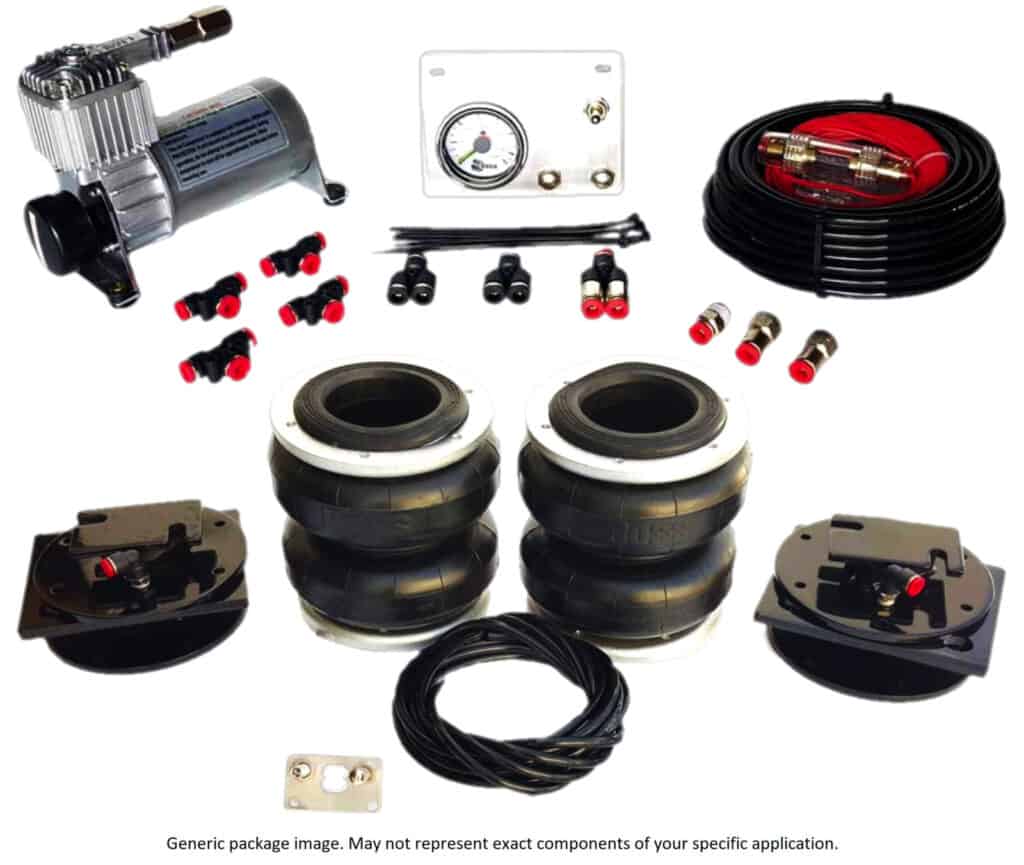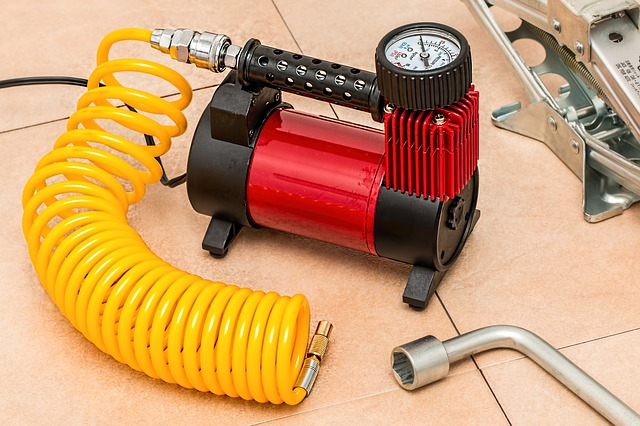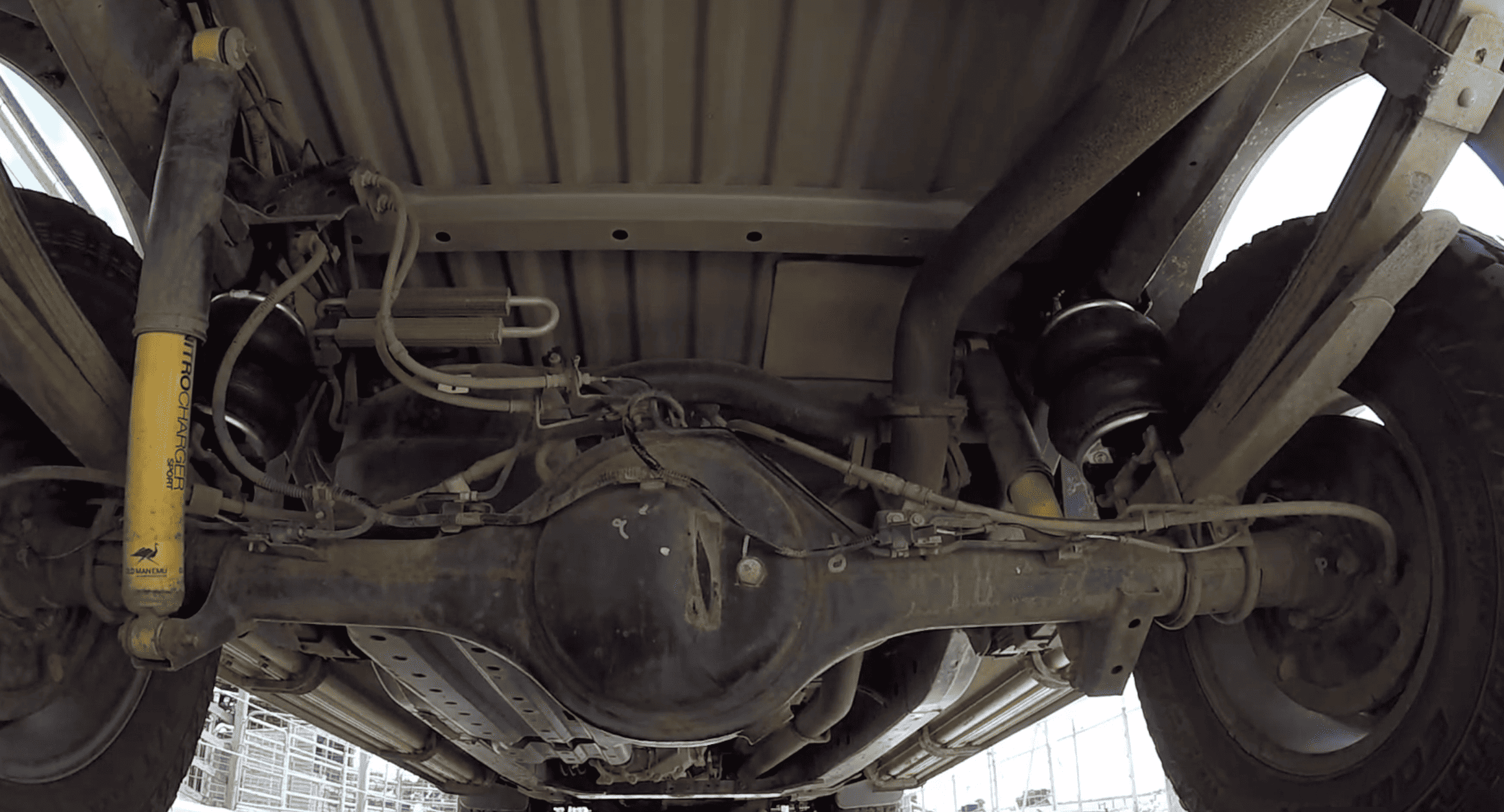Airbag Suspension for Caravans: How It Works
Towing or carrying heavy loads can put a serious strain on your vehicle. If you find that the rear end of your car lowers when driving over rough terrain, an airbag suspension kit might be what’s needed to make sure it handles better and lasts longer.
An air bag suspension uses air-filled bags instead of springs to support the weight of your vehicle and its load. The bags are inflated or deflated as needed using an on board air compressor and controller. This allows you to adjust the ride height of your vehicle, which can be helpful for clearing obstacles or levelling out a caravan with towing.
What is Airbag Suspension?
Air bag suspension or air springs are a type of suspension that uses air bags instead of springs. Airbag suspension is often used in vehicles that are frequently used for towing, such as caravans and camper vans.
The air bags provide a smoother ride by absorbing bumps and unevenness on the road. They also help to level out the vehicle when loaded, making towing safer and easier.
Air suspension can improve fuel economy by reducing drag on the vehicle. It can also reduce wear and tear on the caravan and tow vehicle.
Overall, airbag suspension is an ideal choice when towing a caravan. It provides a smooth ride, helps to level the vehicle, and improves fuel economy.

How Does Airbag Suspension Work?
Airbag suspension is a type of vehicle suspension that uses airbags instead of springs or leaf springs. Airbags are inflated with air to provide a cushion of air between the vehicle and the ground. This gives the vehicle a smoother ride and increases its load-carrying capacity. Airbag suspension can be found on all types of vehicles, from cars and trucks to camper vans.
One advantage of airbag suspension is that it allows the vehicle to be lowered closer to the ground when not used. This decreases wind resistance, which improves fuel economy.
When properly inflated, airbags can provide a more comfortable ride by absorbing shocks from bumps in the road. Airbag suspension is not without its disadvantages, however.
One downside is that if an airbag ruptures, it can cause the vehicle to drop suddenly, which can be dangerous. Also, airbags require frequent maintenance, such as checking for leaks and replacing damaged airbags.
However, airbag suspension is a popular choice for many drivers because of its many benefits when towing caravans or if you carry uneven loads.
How Airbag Suspension Improves Ride
Though they may look similar, there are several key ways in which airbag suspension systems differ from traditional coil spring suspension. One of the most important is that airbags provide a smoother ride, thanks to their ability to adjust to changes in the road surface more quickly than coil springs.
This is especially beneficial when driving on uneven or pitted roads, as the airbags can absorb shock more effectively than coil springs.
Additionally, airbag suspension systems tend to be more durable than their coil spring counterparts, as they are less likely to sag or leak over time.
As a result, airbag suspension is often seen as an upgrade over traditional coil spring suspension, particularly when it comes to delivering a smooth and comfortable ride.
How Airbag Suspension Levels Vehicle
The airbags are filled with air, and the amount of air can be adjusted to level the vehicle. This is especially useful when towing a caravan, as it helps to keep the caravan level with the ground.
This prevents the caravan from rocking back and forth, making towing more difficult and dangerous. Additionally, levelling the vehicle can help to improve fuel economy by reducing drag on the vehicle.
Advantages of Airbag Suspension
Airbag suspension systems have become increasingly popular in recent years, and for a good reason. Airbags offer many advantages over traditional coil spring suspension systems, including a smoother ride, improved handling, and increased durability. The most important benefit of airbag suspension is how it improves ride quality.
Airbags provide a cushion of air between the axle and the vehicle’s frame, which helps absorb bumps and uneven surfaces. This results in a smoother, more comfortable ride for passengers, even on rough roads.
In addition, airbags can be inflated or deflated to adjust the vehicle’s ride height. This allows for greater flexibility in terms of clearance and weight distribution, which further improves ride quality. With so many advantages, it’s no wonder that airbag suspensions are becoming increasingly popular.
Disadvantages of Airbag Suspension
While this design offers several advantages, there are also some potential disadvantages to consider.
One of the biggest disadvantages of airbag suspension is that the airbags can leak, which can cause the car to sag or bottom out. Another potential problem is that airbags can be punctured by road debris, which can cause them to deflate suddenly and unexpectedly.
Airbags can sometimes fail completely, leaving the vehicle without any suspension at all.
Finally, airbag suspension typically costs more than traditional springs, so it may not be an option for budget-minded shoppers. Overall, airbag suspension has both advantages and disadvantages that should be considered before making a purchase.
How Does Airbag Suspension get Installed on My Vehicle?

Airbag suspension can be installed on both new and old vehicles. The process typically involves:
- Replacing the existing springs with airbags.
- Installing an air compressor.
- Connecting the airbags to the compressor via valves and air lines.
The entire process can be done at home with basic tools, but it is generally recommended that it be done by a professional.
Airbag suspension kits are readily available online and at most auto parts stores. Prices vary depending on the make and model of your vehicle.
While airbag suspension can provide a number of benefits, it is important to consult with a professional before making any changes to your vehicle’s suspension.
How do I Inflate or Deflate my Airbag Suspension?
To adjust your vehicle’s ride height and level, you will need to inflate or deflate the airbags. It is done using a standard air compressor that can come with the kit. Or a portable air compressor allows you to add or remove the required amounts of air manually.
When inflating the airbags, make sure to use the correct pressure rating as specified by the manufacturer. Overinflating the airbags can cause them to burst, leading to severe damage.
It is also important to check the air pressure regularly to ensure that the airbags are at the correct level. The ideal pressure will vary depending on the make and model of your vehicle, as well as the weight it is carrying.
Deflating is a simple task by releasing the air from the airbags using the valve. You can then remove or add air as needed to reach the desired pressure.
When Would You Not use airbag suspension?
There are a few instances when you might not want to use airbag suspension. If you’re carrying very heavy loads, for example, over 500kg, airbags can put too much pressure on your shocks and cause them to fail.
You also don’t want to use airbags if you frequently drive on unpaved roads, as the bags can become damaged by rocks and other debris.
If you live in an area with severe weather conditions, airbags can freeze and become less effective.
In general, however, airbag suspension is a safe and reliable way to improve the ride quality of your vehicle.

